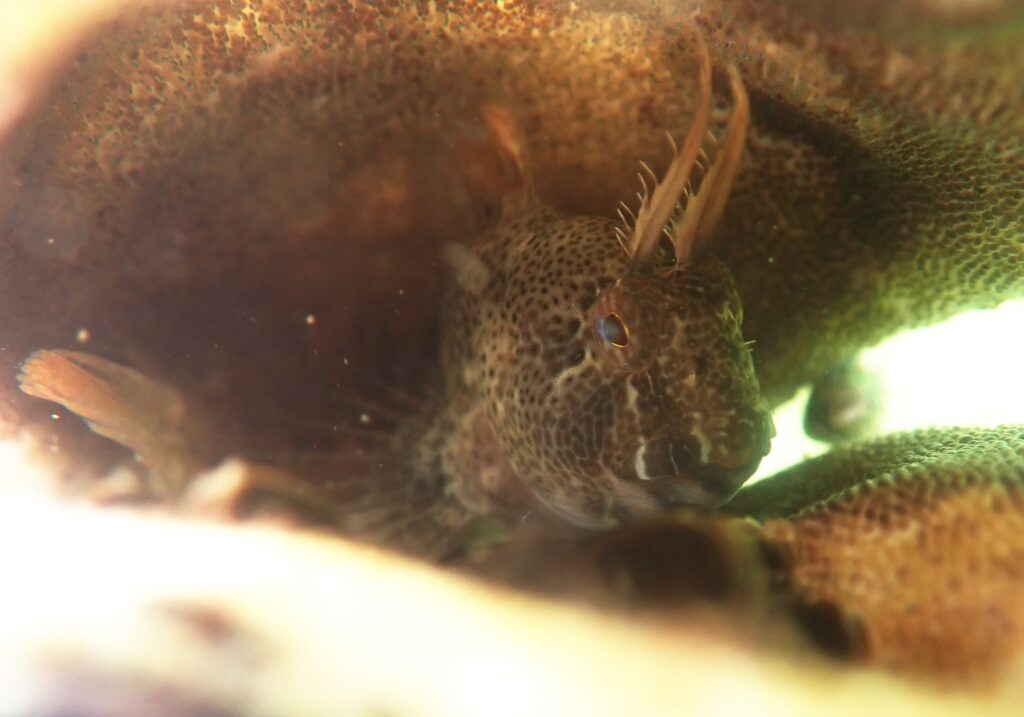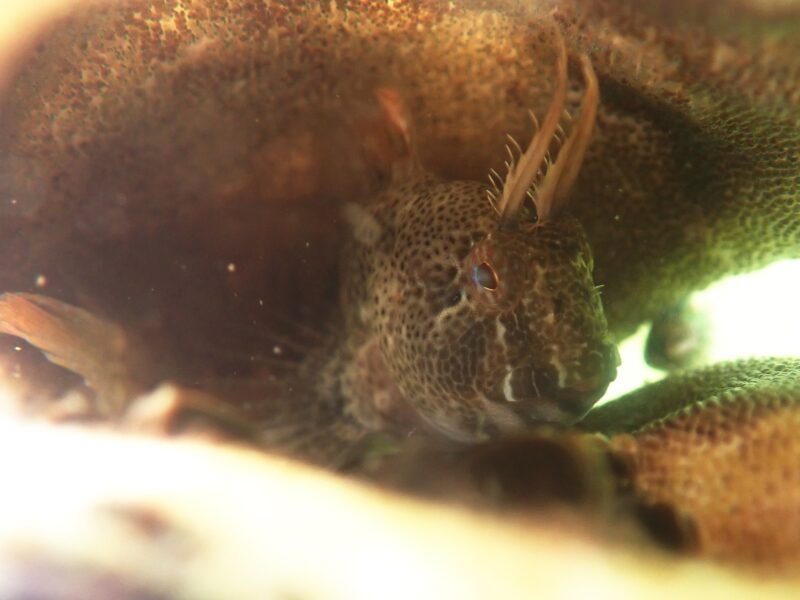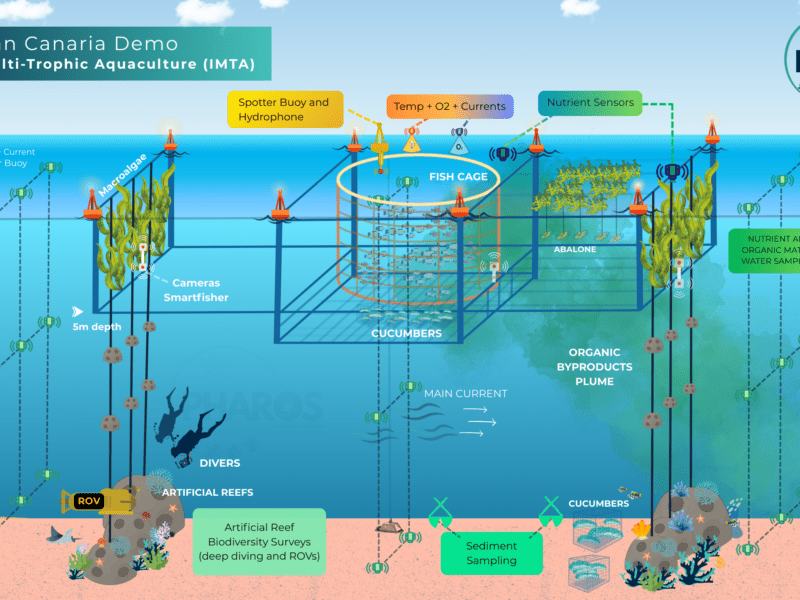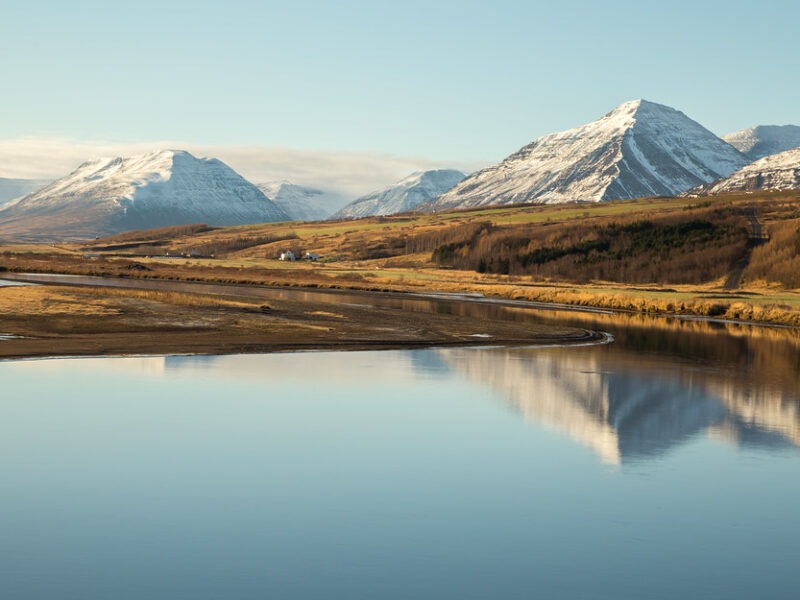
Here is Why Invasive Species Appeared in Ukrainian Waters
Here is Why Invasive Species Appeared in Ukrainian Waters https://pharosproject.eu/wp-content/uploads/2025/10/7-1-1024x717.jpg 1024 717 PHAROS Project PHAROS Project https://pharosproject.eu/wp-content/uploads/2025/10/7-1-1024x717.jpgAuthor: Maria Shevchuk
Published by Informer on 11.10.2025
“Inhabitants of the Ukrainian Black Sea region are asked to report on invasive predatory fish”, “Reproduction of the American blue crab has been recorded in the Black Sea”. These are merely individual headlines from regional news about the Black Sea that appeared during the summer of 2025 alone. Climate change affects it and adjacent waterways, creating a favourable environment for new inhabitants.
Which invasive species are most commonly encountered in the Odesa region, particularly in the Black Sea? Are there threats from “underwater migrants” to species that are characteristic of our ecosystem? And is the appearance of new inhabitants always unequivocally negative for all living things? We approached biologists who specialise in the Black Sea with these questions to find out how our aquatic biodiversity is changing.
New Inhabitants of the Black Sea Region: Positive Impact and Potential Risks
In recent years, new inhabitants have begun to be recorded in the Black Sea. One of the most noticeable invaders is the Korean stone perch. Before the tragedy at the Kakhovka Reservoir, it was not recorded near Odesa’s shores, but it is now becoming a common species, increasingly caught by anglers. Several new species of various small invertebrates have also appeared in the Sukhyi and Tylihul estuaries in southern Ukraine. It is not always clear whether this is truly connected to the war or whether the species had simply gone unnoticed for a long time until it reproduced in sufficient numbers.

Scientists are currently observing the appearance of new species, but the final result will only be visible five to six years after the war ends, because, firstly, all processes seem to be stretched out in time. Secondly, scientists do not immediately notice changes, especially since most regions are currently inaccessible for research. Even with full access to all possible research areas, studying some species in scientific expeditions is a challenging task. Such is the case with the American blue crab mentioned above.
“The problem is that this is a species that is difficult to find in ordinary expeditions. It is highly mobile and fast-swimming, so standard monitoring methods such as grab samplers used for taking bottom samples cannot detect it. It is more often seen by divers, caught in nets by fishermen, or observed by holidaymakers. Recently, a specimen with eggs was found, and genetic analysis was performed on it for the first time in Ukraine to understand how the species reproduces,” explains Mykhailo Son, senior research fellow at the Institute of Marine Biology of the National Academy of Sciences of Ukraine.
Black Sea mussel in Sukhyi Estuary
It should be noted that the blue crab, as a species, has been recorded in the Black Sea for quite some time, already for dozens of years. However, over the past twenty years, in connection with climate change, it has gained wider distribution in the Black Sea. Whilst at the end of the 20th and beginning of the 21st centuries such discoveries were accidental, stable populations are now being observed. Similar situations are observed in the rivers of the Black Sea region with other species.
Thus, in the Danube region, a giant freshwater prawn called the oriental river prawn has spread. It has also been observed in the Odesa region for quite some time, but over the past five to six years, due to climate change, there has been much more of it. It has adapted particularly well in the Danube, where optimal conditions were found for it. Mykhailo Son travelled to this region on an expedition in the summer and photographed a prawn that was larger than a palm. Anywhere a person sets fishing equipment, the prawn will guaranteed end up in it.
This species is edible, its catch is not regulated, unlike the river crayfish, and it does not require protection since it is an invasive species. In recent years, it has become a source of food on the Danube; fishermen actively catch and sell it. The price of the commodity varies from 400-500 hryvnias per kilogram. And it can be caught all year round, unlike river crayfish with their spawning prohibitions and restrictions. However, the reproduction of invasive species carries potential risks that may negatively affect other inhabitants.
“We never know all the risks associated with the settlement of alien species. One cannot exclude the possibility that some diseases might transfer from the prawn to crayfish. When we had crayfish in good condition on the Danube, the Soviet Union exported them not just by the kilogram. In the Odesa region, there was simply a local airport near Lake Katlabukh that daily transported live crayfish to France by plane. This cannot be compared to what we have now. Crayfish are very sensitive to various parasites and different infections. In Europe now, most local crayfish at some point simply died out from crayfish plague. And they were replaced by American relatives,” says Mykhailo Son.
Commercial fishing is a particular method of regulation and a possible positive aspect that can result from the reproduction of invasive species. The oriental river prawn is precisely a help to the local population, when an individual fisherman catches several kilograms per year and sells them. That is, this works for ordinary local inhabitants.
Examples of Black Sea Invasive Species That Appeared Earlier
The main risk that invasive species pose to any ecosystem lies in the fact that they compete with local species and displace them. According to Pavlo Holdin, leading research fellow at the I.I. Schmalhausen Institute of Zoology of the National Academy of Sciences of Ukraine, the brightest example of invasion is precisely the spread of humans across the globe. When people arrive somewhere in places where they had not been before, local animals are not adapted, they do not fear this person and do not know how to hide from them. Approximately the same thing happened in the Black Sea ecosystem with the arrival of two invaders whose appearance had catastrophic consequences. These are Rapana and the comb jelly Mnemiopsis.
Mnemiopsis caused significant damage to Black Sea fauna
Rapana was recorded in the Black Sea in the 1940s, and Mnemiopsis in the 1980s, which is why there is extensive research on the negative impact of these species. Mnemiopsis, having no natural enemies, reproduced uncontrollably and began devouring large quantities of zooplankton – the main food base for fish. Rapana became an object of commercial fishing, but this was not enough to neutralise the harmful impact.
“Rapana is such a predatory marine mollusc that crawls along the sea bottom and eats everything it can reach. In particular, Rapana completely consumed the Black Sea oyster, a significant part of the Black Sea mussel and other bivalve molluscs. And because their biomass decreased significantly, the quality of seawater filtration deteriorated, because bivalve molluscs are the main filters. Correspondingly, the content of biogenic elements increased in the sea water column, which led to the so-called eutrophication process. This is when there is a lot of organic matter in the water, which reduces oxygen content because all oxygen is absorbed by this organic matter,” explains Pavlo Holdin.
Due to reduced oxygen content, the number of bivalve molluscs that participate in seawater filtration decreased even further. This is particularly visible in Odesa, in the example of the north-western part of the Black Sea, which was historically rich in biogenic substances in the water. Over recent decades, biodiversity has decreased in those areas where new inhabitants of the Black Sea, who have no natural enemies and competitors, have actively spread.
Black Sea fauna became significantly impoverished due to invaders
It should be noted that not all invasive species have such catastrophic consequences for the environment. However, active reproduction of any new species can have unpredictable consequences. The behaviour of invaders is unpredictable, and any conclusions about their impact can only be made after the population actively reproduces. As experience of observations of Rapana and Mnemiopsis shows, these processes can take dozens of years.
Ecological Catastrophes and Their Consequences: What Awaits the Black Sea?
After the destruction of the Kakhovka Hydroelectric Power Station, large flows of water went to the Black Sea, and with them species that can live both in the sea and in fresh water. The situation when marine and freshwater populations of one species cross-breed may pose a potential threat. When they produce joint offspring, some recessive genes may surface, that is, genes that are not active at the moment but do exist. They may surface in some subsequent generation, and no one can say with certainty what these genes will be.
The Black Sea after the Kakhovka HPP explosion in June 2023
Thanks to genetic relatedness, the offspring of such populations will be fertile, and the outcome could be either some invasive new population or, conversely, individuals vulnerable to diseases. Ultimately, a situation may arise where the population begins to die out, and with it the species disappears. Yurii Kvach, leading research fellow at the Institute of Marine Biology of the National Academy of Sciences of Ukraine, notes that no one can reliably predict how this situation will turn out or what awaits such species in the future.
“One such species that has both marine and freshwater populations is the round goby. This is our Black Sea goby, which was previously very common near Odesa. This species is considered, in principle, brackish-water; it would go up rivers and form freshwater populations there. But this is all one species. However, freshwater populations have a different genetic structure, and they can cross-breed with their marine relatives. And this is only one example. Various small fish-like creatures, some molluscs that form both marine and freshwater populations. A heap of species that only researchers know about, but they exist,” explains Yurii Kvach.
Moreover, the situation when different species cross-breed amongst themselves does not pose such a threat. Actually, this process occurs constantly, especially in aquatic environments, because external fertilisation takes place there. Both sperm and eggs are released externally in fish, and in such situations various hybrids are regularly born. However, they do not pose a threat to the ecosystem because they are not stable in the external environment, do not live long, and do not produce offspring.
This is a natural biological process; such hybrids do not produce subsequent generations, they simply consume some resources, perform a certain function in the ecosystem, and then they are simply eaten, and again, this is also a positive moment. A kind of natural control over population numbers, and it carries absolutely no danger. Cross-breeding of different populations, different in origin of one species, poses a danger because there can be hidden invasion. After all, new species, under favourable conditions and active reproduction, can displace indigenous ones.
Scientific expedition in the Danube Delta
Research continues at present, but the state of war dictates its limitations. Biologists work throughout the entire Odesa Bay, investigate delta areas, and have permits for work in the Danube Biosphere Reserve. The latter borders Romania, so special permission is obtained from border guard units for work on site. Work in the estuaries of Odesa region, which provides an opportunity to understand the state of biodiversity in the Black Sea, is also of great importance.
“We can work, firstly, in beach zones that are open. Also, some of our estuaries practically have marine ecosystems, for example, Tylihul or Tuzlov estuaries; we work there too. That is, research can be conducted, it’s just that as of today, unfortunately, we cannot give a complete picture. When we need information from the open sea, it’s impossible to get there. But, of course, there is understanding that we are hostages of the situation that has developed, because we didn’t start this war,” notes Yurii Kvach.
The compass jellyfish has more than once bothered holiday makers on the beaches of Odesa and the region
Today, scientists can only state that new species are appearing in the Black Sea. Changes are also occurring because the Russian military fleet moves about completely uncontrollably, and oil spills from the “shadow fleet” also bring nothing good for the ecosystem. It will only be possible to investigate how this will affect the Black Sea in the future.
- Posted In:
- BLOG
- Partner News


